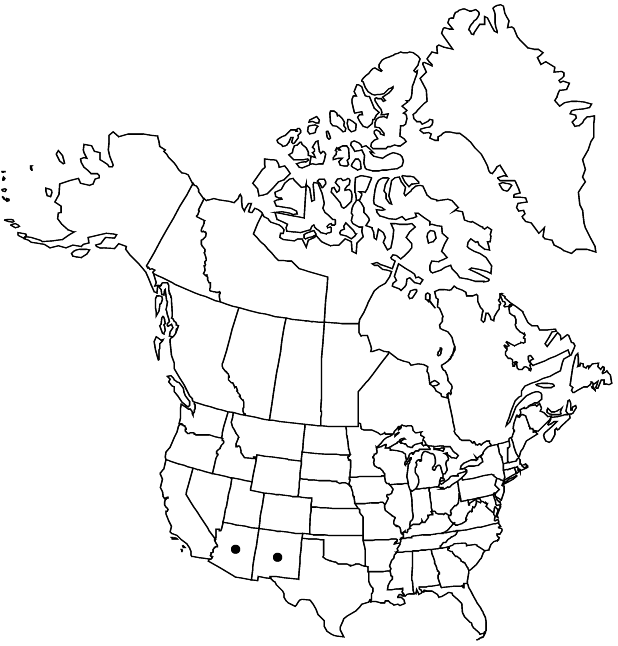Difference between revisions of "Ribes pinetorum"
Bot. Gaz. 6: 157. 1881 ,.
FNA>Volume Importer |
FNA>Volume Importer |
(No difference)
| |
Revision as of 20:29, 24 September 2019
Plants 1–2 m. Stems erect to sprawling, tomentose, stipitate-glandular; spines at nodes 1–3, 5–12 mm; prickles on internodes absent. Leaves: petiole 1–2.5 cm, tomentose, stipitate-glandular; blade roundish to broadly triangular, 3–5-lobed, cleft 1/2 to midrib, 1–3 cm, base truncate to cuneate, surfaces pubescent, with long-stalked glands, or glabrous, lobes oblong, margins with rounded teeth, apex rounded. Inflorescences pendent, solitary flowers, 2–3 cm, axis stipitate-glandular. Pedicels not jointed, 2–3 mm, tomentose, stipitate-glandular; bracts lanceolate, 1 mm, pubescent. Flowers: hypanthium green, tubular, 6–8 mm, pubescent; sepals not overlapping, spreading, orange, orangish, or purplish, oblong-rounded, 6–16 mm; petals nearly connivent, erect, pale orange, oval to oblong, not conspicuously revolute or inrolled, 4–6 mm; nectary disc not prominent; stamens shorter than petals; filaments linear, 4 mm, glabrous; anthers cream, oval to oblong, 1–1.3 mm, apex raised, notched; ovary densely bristly; styles connate nearly to stigma, 6–8 mm, glabrous. Berries palatable, dark purple, globose, 10–15 mm, densely spiny.
Phenology: Flowering Mar–Sep.
Habitat: Coniferous forests
Elevation: 1900-3100 m
Discussion
Ribes pinetorum is the most important member of the genus within its range for spread of white pine blister rust (E. P. Van Arsdel and B. W. Geils 2004). The anthers are connivent, separating in age.
Selected References
None.
